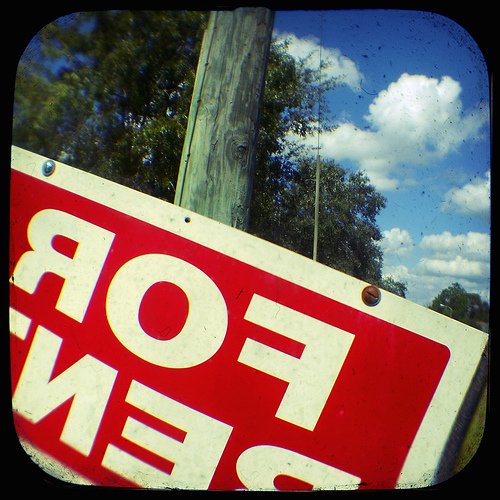Every real estate market brings its own unique set of challenges for real estate investors. Back in 2005-06, the foreclosure wave hadn’t quite made it to shore yet, but it was giving its first signals. Long term real estate investors could purchase investment properties with as little as 10% down on a conventional mortgage but interest rates were just under 7%. Fast forward a couple of years (2008-10) and the recession was in full swing, foreclosure deals were a dime a dozen and Bernanke’s quantitative easing (a mouthful, isn’t it?) had slashed rates to record lows. But there was “blood on the streets”, the end of the world was surely coming and no one was sure their job would still be there next week. These days, the Houston real estate market is hot, rents are increasing every year, vacancies are low to nonexistent and investment property interest rates are in the low to mid 4s. But at the same time, strong demand from owner occupant buyers coupled with disadvantageous “first look periods” and lower foreclosure inventories are making it increasingly harder to find and acquire investment properties. As any real estate investor who’s actively looking will tell you, competition is pretty brutal right now. Frustrated investors are throwing prudence to the wind and overbidding on properties just to “buy the damned thing”. And those that aren’t, are starting to get cynical and conclude that this real estate investing thing doesn’t really work.
So how does one find investment properties in a high demand Seller’s market?
You change your approach. The definition of insanity is doing the same thing over and over and expecting a different result. So if your search criteria and market conditions remain the same, your results cannot be different. I’ll share a geek story with you to illustrate my point: In college, I’d often work on a math equation and have issues solving it. I’d go over it over and over again making the same mistake every time. Then, I’d ask a classmate to review my work and when she’d look at it with fresh eyes, the mistake would be spotted immediately. So that’s my advice: Take a look at your property selection criteria with “fresh eyes”. Many real estate investors will look for properties under a certain price range and not even know why. They’ve just been told that I order to succeed at investing in real estate you have to buy cheap. Or they will chase Bigfoot and look for properties that are selling at 60 cents on the dollar less repairs like that investing book told them. As a result, you have a large number of investors chasing the same properties, driving up prices and not even getting that precious equity they bought the property to get in the first place.
Here’s a step by step plan to re-evaluate your investing goals and property selection criteria:
1. Start with having clear, written, well-defined and specific investing goals.
To quote Zig Ziglar, you won’t be successful in life as a wandering generality – you must become a meaningful specific. Even the best map in the world can’t help you if you don’t know where you’re trying to go. “I just want some extra income” or “I just want to start with a house and see where it goes” are to be frank, vague and mediocre goals that will yield equally mediocre and vague results.
“I want to retire in 12 years and need $75k in annual income to achieve that goal” or “I want to increase my capital base to $1M in the next 8 years” or “My kids will go to college in 11 years and that will cost 225k”. That’s what I mean by specific: it has time limit, an amount and a “why” associated with it.
2. Next, create a real estate investing Blueprint to achieve those goals
This Blueprint will address the all important questions: How many assets will you need to acquire, where, how and what strategy will you follow from now on to hit those goals in step 1. This is the most important step and I can help you with it.
3. Once the plan is in place, determine investment property selection criteria
Now that your goals are specific and you have a plan to accomplish them, you will focus on which properties will help you best achieve those goals versus “how much equity am I getting here”. Don’t get me wrong, equity may play a part in your plan but it won’t be your end all, be all selection criterion that is now disqualifying excellent properties from your consideration. If you could purchase a portfolio of properties at a fair price that would allow you to retire with the income you need, or build your net worth to the level you want, or pay for those college expenses, why wouldn’t you? Because some one size fits all investing “bible” told you so? Don’t kid yourself and keep your focus on what matters most: your retirement, your wealth, your kids education.
4. Acquire the assets and build your portfolio
Now that you’ve taken a fresh look and allowed yourself to get out of the corner you painted yourself into, you will notice something amazing happen: More investment opportunities, less completion and more assets in your portfolio. Patience will still be required as the current market conditions will affect property availability here as well. But it won’t be the lost cause of throwing tens of offers at the wall to see what sticks.
I know that my answer on how to find investment properties in a hot real estate market will probably disappoint those of you who read this post hoping that I would reveal a “secret list of properties, unknown to the general public that you can have access to today for just $39.95”. But unlike those useless gimmicks, the plan I’m talking about actually works. And isn’t that the point of this whole thing?




I am passionate about getting into the real estate investing market but do not have any of my own money to use at the moment. I know there are oppurtunities out there and I would like to learn more.
Hi Kenneth
Passion is definitely a required ingredient in this business. As far as investing methods that don’t require your own capital, they’re pretty limited to wholesaling and bird-dogging. The first is where you find a good deal on a property, put an assignable contract on it then sell the contract to another investor for what you agreed to pay plus a fee for you. Bird-dogging is where you tip real estate investors about a deal and they pay you a finders fee. Since investing without any capital is a path many investors get started in, those two methods are pretty saturated with lots of people trying to do and going after the same thing. So in addition to passion you will need plenty of persistence. In the meantime, another way to get started is to build up your capital slowly. Think about it this way: If every day you save the cost of a lunch, that’s close to $4k a year! In a few short years you will be ready to invest longer term. Hope this helps!